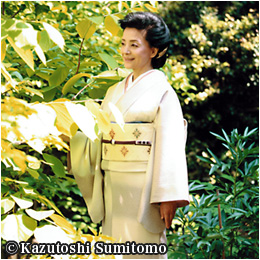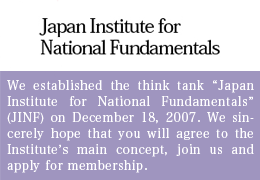Japan’s New Administration Must Make Every Effort to Resolve the Abduction Issue
Despite North Korea’s stubborn insistence that Megumi Yokota, the 13-year-old junior high school girl kidnapped by North Korea 35 years ago, “died in 1994,” there is strong evidence that she was actually alive at least as of 2007.
Just last week, an additional piece of information pertaining to the likelihood of her being alive after 2007 surfaced as Japanese government officials continued efforts to rescue her and other Japanese abductees, working closely with members of the “Association of Families of Victims Kidnapped by North Korea” and the “National Association for the Rescue of Japanese Kidnapped by North Korea.” The latest information came in testimony a North Korean defector made at a December 14 international symposium in Tokyo entitled: “Latest Information Pertaining to Abductees and Strategies for Their Rescue.” Li Young-su (pseudonym) defected to South Korea in early 2007 while working as a procurer for the operations department of the North Korean Workers’ Party. He now resides in Seoul.
Before reviewing his testimony, let us take a quick look at Li’s personal history. Li, a small man with a dark complexion, appeared before the crowd wearing a pair of dark sun glasses to mask his identity. He was born in 1965 in the North Korean prefecture of Jagon-do, across the Yalu from China, as the son of a captured South Korean soldier. His father died in 2006 after many years of hard labor in the mines.
Li joined the North Korean People’s Army (KPA) in 1980. Family members of former South Korean soldiers and officers ordinarily aren’t admitted to the KPA because they are considered of inferior “songbun” (“origin”) – the system of ascribed status used in the North. But he is said to have been admitted under a directive from General Secretary Kim Il-sung, who demanded that one member per family of inferior “songbon” be drafted into the army to undergo a thorough immersion in revolutionary thought.
Li served in the 66th brigade of the 2nd Army Corps for eleven years, winning high recognition as an exemplary soldier as he worked assiduously to make up for his inferior origin. When discharged from the army, however, Lee was sent to hard labor in the mines like his father. An indignant Li allegedly remarked to army authorities: “Being sent to the mines is too harsh a treatment after eleven long years of tough duty in the army. Instead of me, one of General Secretary Kim Jong-il’s own sons should be sent to set an example.”
Because his remarks constituted an unthinkable criticism of Kim Jong-il, Li was quickly sent to the infamous Yodok concentration camp – said to have the toughest treatment of inmates of any prison in North Korea. Unlike other inmates, however, Li was not roughed up during interrogations there, presumably because camp officials, who had known about the excellence of his records in the military, were reasonably sympathetic to him. Li was given the job of caring for the domestic ducks kept in the camp for food. The year was 1991.
Photos of Four Japanese Abductees
To his surprise, Li found a significant number of high-ranking North Korean government officials and their in-laws interned at Yodok. They included such figures as the third son of Pak Song-chol, premier from 1959 to 1975; Li Jong-ok, premier from 1977 to 1984; the husband of one of Chang Song-taek’s cousins; the family of the brother-in-law of Kim Young-ju, Kim Il-sung’s younger brother, who then held the position of vice premier; and a distant relative of Vice Premier Kim Dal-hyong related to Kim Il-sung on the mother’s side. Incidentally, Chang Song-taek is the husband of Kim Kyong-hui, who is an aunt of the current North Korean leader Kim Jong-un and a sister of Kim Jong-il.
Tsutomu Nishioka, chairman of the National Association for the Rescue of Japanese Kidnapped by North Korea, gave the following explanation about Yodok:
“The camp is made up of two zones – the revolutionary zone and the total control zone. While inmates may expect to be released from the former after a certain period of intensive revolutionary thought training, the latter is known to be a zone nobody is allowed to get out of. Fortunately, Mr. Li had been sent into the revolutionary zone, where he managed to make connections with the higher-ups.”
Li adroitly developed intimate relations with Yodok’s security officers as he complied with their requests for making ducks available on the sly. Eventually, working in tandem with some officials of the camp’s security section, he approached the afore-mentioned higher-ups in the camp to start a lucrative secret private business of serving as liaison between them and their families and friends outside the camp. Li and his accomplices are said to have been paid US$5,000 each time a letter from the camp safely reached such prominent figures as Kim Kyong-hui, Jong-il’s sister.
After Li was released from the camp in 1994, he continued his secret liaison business. The modus operandi was spy-like. One example: when his former colleagues in the camp’s security section paid a visit to a nearby graveyard, he would have them conceal letters in a pre-arranged spot. He would later drive a motorcycle to pick up the letters there. Because he was teamed up with the staff of the security department, he claims to have always managed to sneak past censorship.
In 1996, Li landed a job as a procurer for the operations department of the North Korean Workers’ Party. When his boss, a party executive, was diagnosed with cirrhosis of the liver, his son asked Li to help save his life. So, the two of them took an extensive trip across North Korea’s countryside looking for medicinal herbs. When the boss died, his son was appointed as an advisor for the operations department, following in his footsteps. It was from him that Li was able to obtain information pertaining to Japanese abductees, including the lead introduced at the outset of this column having to do with Megumi.
In point of fact, Li also has other information regarding Megumi. For instance, immediately after the death on August 13, 2004, of Ko Young-hee, the birth mother of Kim Jong-un whom his father Jong-il loved very much, Li heard from the son of his demised former boss that Ko, who was fluent in Japanese, took interested in – and frequently spoke to – a Japanese woman abducted to North Korea when young.
Around December of 2006, a broker specializing in smuggling North Koreans to the South suggested to Li that, if he was interested in defection, he should gather information on Japanese abductees, as it would prove most lucrative once he successfully slipped out of the North. Li promptly approached the son of his former boss, who told him he could not possibly take out the files themselves but that Li should wait ten days and he would see what he could provide. Ten days later, he was given a sheet of paper with the identification card photos of four Japanese – three women and one man – copied on to it side by side with individual names written on the back.
Li said he was told that documents concerning Megumi were inaccessible, as she had been placed under special surveillance. However, he was also told that North Korean authorities had changed Megumi’s Korean name from “Kang Mi-suk” to “Han Su-ne” after they delivered what they claimed were her bones, declaring that Megumi had taken her own life.
Seams of the Kim Jong-un Regime Coming Undone
Continues Nishioka:
“Two years ago, a 2005 directory of Pyongyang’s 2.1 million residents compiled by the Security Department of the party leaked. Our association got hold of a copy, picking up information concerning a total of 68 Japanese living in Pyongyang. In it was a listing of a family in Taesong District made up of a husband named Kim Young-nam and a daughter named Kim Un-gyong, along with a woman, presumably his wife, named ‘Han So-ne.’ Her birthdate was given as October 5, 1964, which is the same as Megumi’s. We believe that is Megumi’s family as we already know from TV appearances (made by the husband and the daughter in Pyongyang in July 2006) that his name is Kim Young-nam and that her daughter who is a student at Kim Il-song University is name Un-gyong – just as the directory showed.
“We didn’t find Megumi’s name in the family register but are pretty sure that ‘Han So-ne’ refers to ‘Han Su-ne,’ which is how Mr. Li pronounced the ‘new’ Korean name that he said the authorities had given Megumi. I believe it is safe to say this proves the trustworthiness of the information Mr. Li has brought with him.”
Li said he saw a Japanese woman at the Yodok political prison, indicating that he understood that she had been interned for a good ten years as of the early 1990s. Commented Li:
“Unless one is a high-ranking government official, anyone interned there for as long as ten years would be dressed in tatters, with no decent bedclothes to sleep in. In winter, the temperature drops to 20 degrees Centigrade below zero. This woman was still there when I finally got out of the camp in May of 1994.”
Unfortunately, Li has been unable to show the copy of the photos of the four Japanese which he had obtained from the prison official, as he lost it to the broker by deception. However, with the seams of the Kim Jong-un regime already beginning to come undone, a good deal of information is beginning to leak out of the recluse republic. Points out the founder of Free North Korea Radio, Kim Seong-min, who is also a defector from the North like Li:
“A year ago last December, Kim Jong-un led an entourage of eight men accompanying the hearse that carried the body of Kim Jong-il. Of these men, four have already been purged. The first year of the Kim Jong-un regime was a year of purges. I think the seams of the regime will come increasingly undone from now on.”
Negotiations between Japan and North Korea, suspended because of North Korea’s recent missile launch, will be resumed in due time, while the Kim Jong-un regime continues to show signs of crumbling under its own weight. Taking full advantage of this opportunity, Japan should get to the negotiation table by fully coming to grips with the total number – as well as the whereabouts – of Japanese abductees and wives married to North Korean men, absolutely determined to bring every one of them back to Japan.
Clearly, it is time for the people of Japan to join hands to resolve the abduction issue with all our resources. For that purpose, there should be a consolidated effort for future negotiations with Pyongyang, discarding the old mindset of which minister or administration should get credit for a successful resolution of this lingering nightmare.
(Translated from “Renaissance Japan” column no. 540 in the December 27, 2012 issue of The Weekly Shincho)








